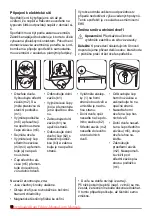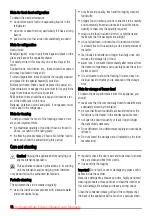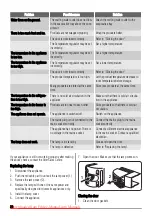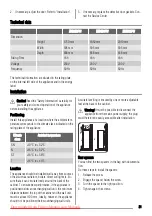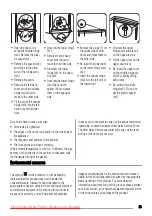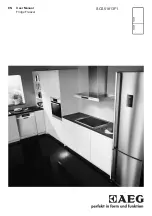
er. This operation will improve the performance of the ap-
pliance and save electricity consumption.
Important! Take care of not to damage the cooling system.
Many proprietary kitchen surface cleaners contain chemi-
cals that can attack/damage the plastics used in this appli-
ance. For this reason it is recommended that the outer
casing of this appliance is only cleaned with warm water
with a little washing-up liquid added.
After cleaning, reconnect the equipment to the mains sup-
ply.
Defrosting of the refrigerator
Frost is automatically eliminated from the evaporator of
the refrigerator compartment every time the motor com-
pressor stops, during normal use. The defrost water
drains out through a trough into a special container at the
back of the appliance, over the motor compressor, where
it evaporates.
It is important to periodically clean the defrost water drain
hole in the middle of the refrigerator compartment channel
to prevent the water overflowing and dripping onto the
food inside. Use the special cleaner provided, which you
will find already inserted into the drain hole.
Defrosting of the freezer
The freezer compartment of this model, on the other hand,
is a "no frost" type. This means that there is no buildup of
frost when it is in operation, neither on the internal walls
nor on the foods.
The absence of frost is due to the continuous circulation
of cold air inside the compartment, driven by an automati-
cally controlled fan.
What to do if…
Caution! Before troubleshooting, disconnect the
power supply.
Only a qualified electrician or competent person must do
the troubleshooting that is not in this manual.
Important! There are some sounds during normal use
(compressor, refrigerant circulation).
Problem
Possible cause
Solution
The appliance is noisy.
The appliance is not supported prop-
erly.
Check if the appliance stands stable (all
the four feet should be on the floor).
The compressor operates contin-
ually.
The Temperature regulator may be set
incorrectly.
Set a warmer temperature.
The door is not closed correctly.
Refer to "Closing the door".
The door has been opened too fre-
quently.
Do not keep the door open longer than
necessary.
The product temperature is too high.
Let the product temperature decrease to
room temperature before storage.
The room temperature is too high.
Decrease the room temperature.
Water flows on the rear plate of
the refrigerator.
During the automatic defrosting proc-
ess, frost defrosts on the rear plate.
This is correct.
Water flows into the refrigerator.
The water outlet is clogged.
Clean the water outlet.
Products prevent that water flows into
the water collector.
Make sure that products do not touch
the rear plate.
19








